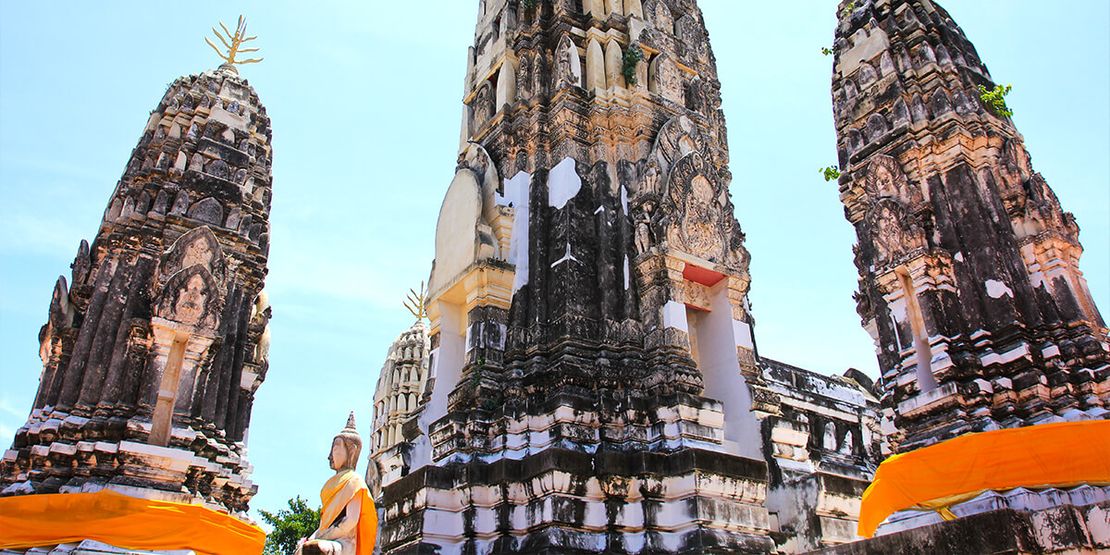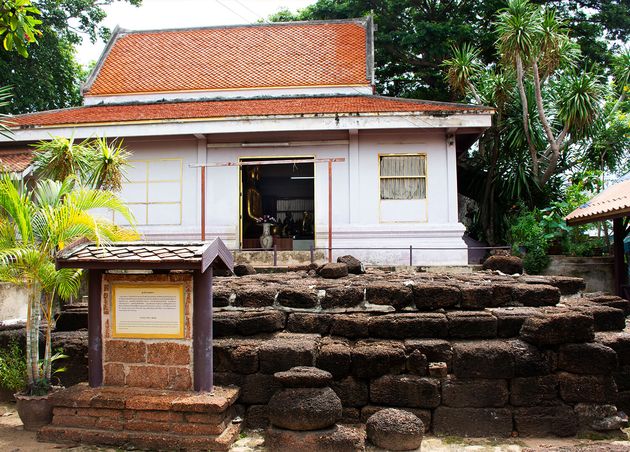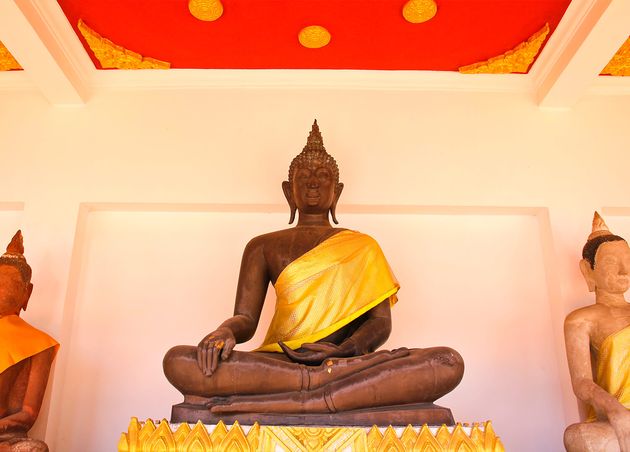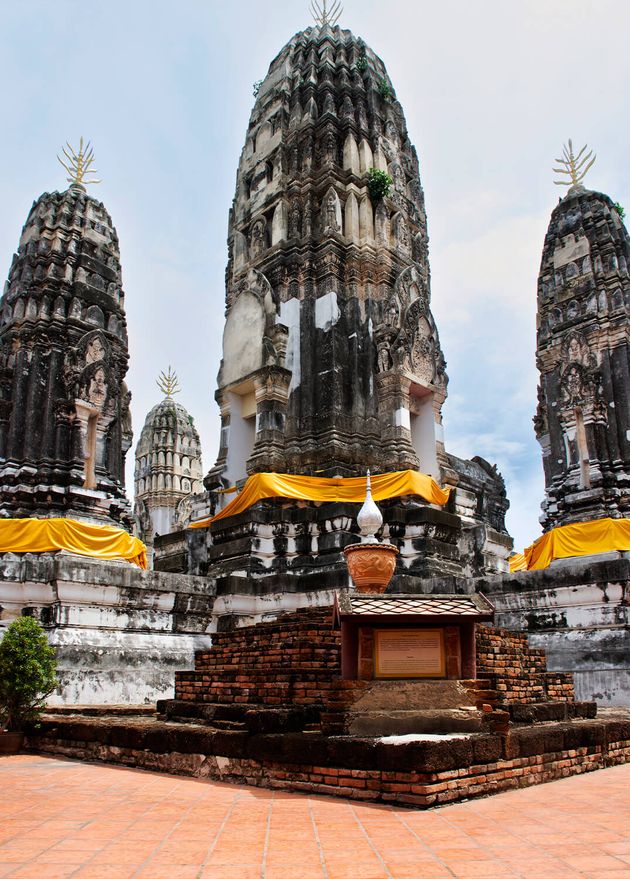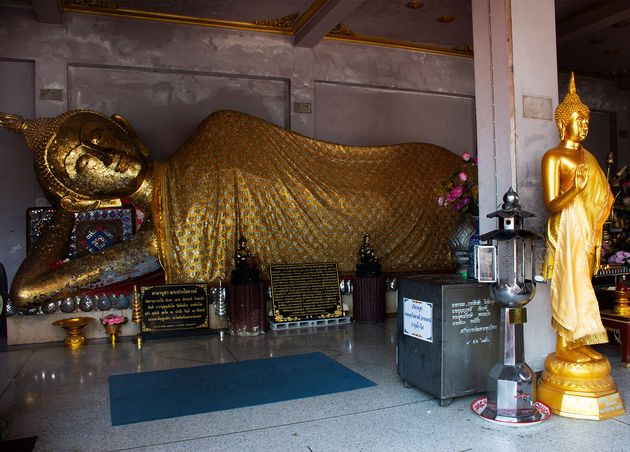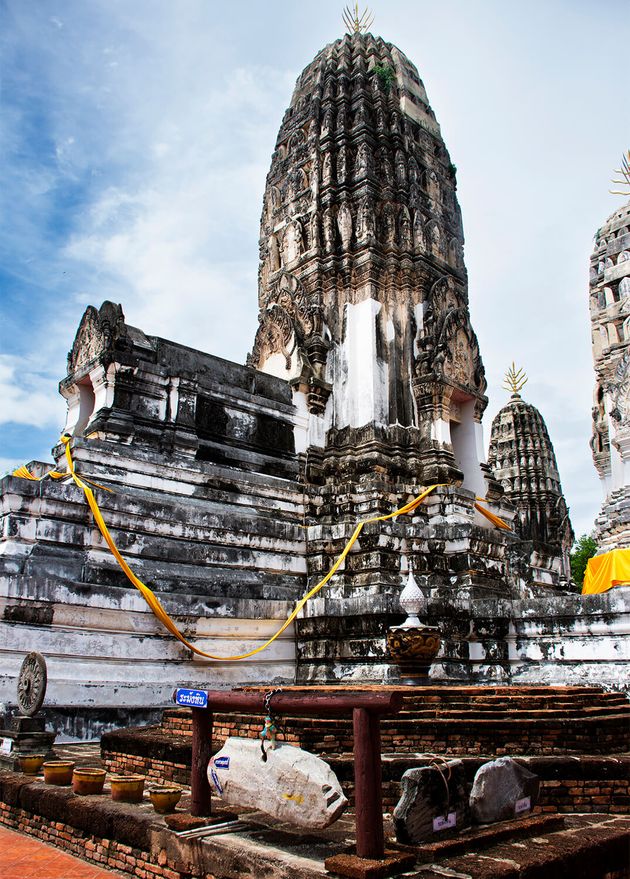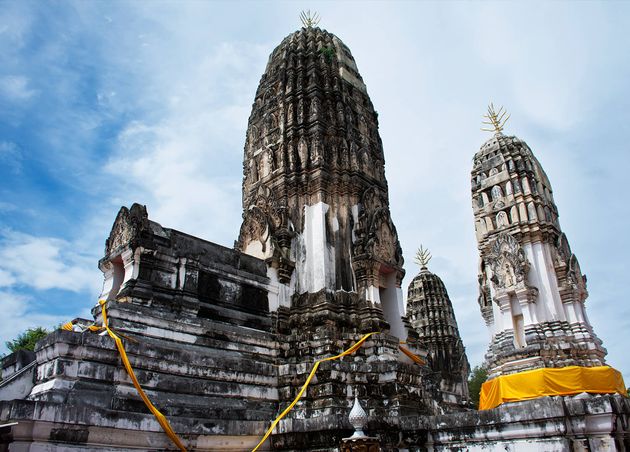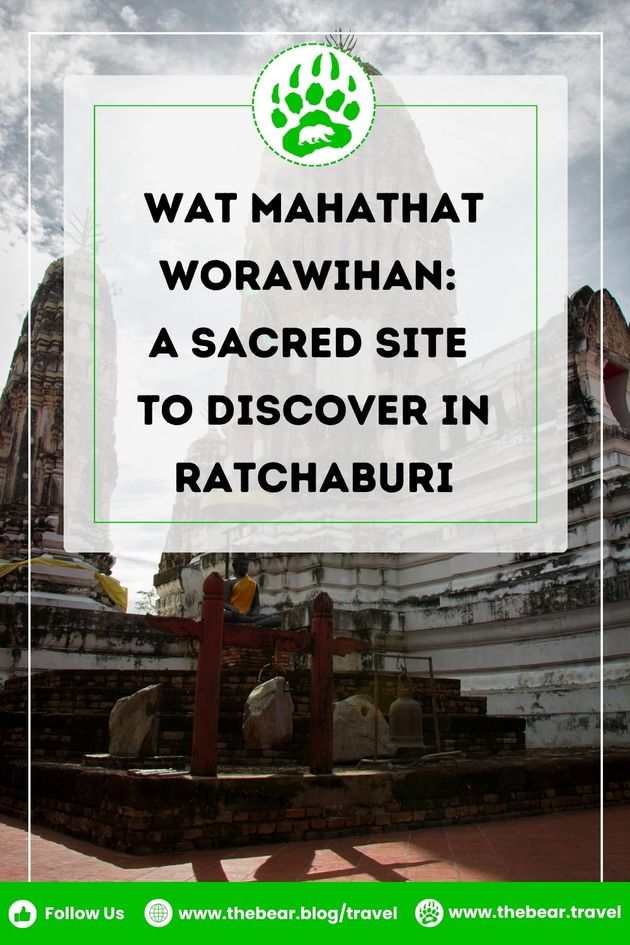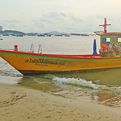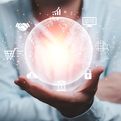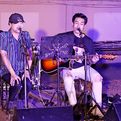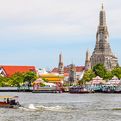Wat Mahathat Worawihan: A Sacred Site to Discover in Ratchaburi
Wat Mahathat Worawihan is a significant historical Buddhist temple in Ratchaburi, Thailand, offering a profound cultural experience.
Visitors come to pay their respects to the Buddha's relics, worship, offer prayers, and meditate at this revered site. The temple features a notable bronze sculpture of Lord Buddha, dating back to the 14th century, which is a primary attraction for visitors.
The temple frequently welcomes many visitors, especially during Buddhist festivals. An appealing aspect is that there is no entrance fee to access this sacred site, making it an excellent destination for you and your companions.
Come along as we embark on a spiritual journey, delving into the rich details of this renowned destination in Ratchaburi. Let's get started!
Once you arrive at the temple, you will be lucky enough to honor the Buddha's relics at Wat Phra Mahathat Woramahawihan.
Unveiling the Mystique of Wat Phra Mahathat Woramahawihan
Wat Mahathat Worawihan is a temple that houses sacred relics of the Buddha. It falls under the Worawihan category, a third-class royal sanctuary with origins dating back to the reign of Jayavarman VII of the Khmer, around the 18th Buddhist century.
Upon arriving at Wat Mahathat Worawihan and gazing upwards, you'll be greeted by the sight of five gleaming white prangs that grace the skyline of Phetchaburi, Thailand. These prangs serve as the temple's iconic symbol, renowned for their striking beauty and elegance, not just across the nation but around the world. The towering prangs are often used as navigational landmarks when exploring the city, as their impressive height makes them visible from afar.
Situated in the heart of the town, Wat Mahathat Worawihan, the royal temple of Thailand, is especially renowned for its remarkable gold-covered Buddha statue, Phra Phuttha Chinnarat, which translates to "King of Victory." It is celebrated as one of the most exquisite Buddha images in Thailand.
Explore the Timeless Wonder of a Legendary Pilgrimage Site
Wat Phra Mahathat Woramahawihan, also affectionately known as Wat Phra Mahathat, is an ancient and revered religious sanctuary in Nakhon Si Thammarat province. This sacred site holds significant cultural importance, symbolizing the province itself. Central to its significance is the Phra Borommathat Chedi, which houses relics of the Buddha, attracting devout Buddhists from across the globe who visit to pay their respects.
Within the temple, you'll encounter the magnificent Phra Borommathat Chedi, crowned with a splendid golden pinnacle. This chedi was constructed to enshrine the relics of Phra Dentist, often referred to as the Buddha's Tooth, which is located on the left side of the chedi. The legend of Phra Borommathat Nakhon Si Thammarat narrates how Prince Thanakuman and Queen Hemchala were instrumental in bringing these relics to be enshrined at Sai Kaew Beach, where they also erected a modest chedi. This symbol holds profound significance and is revered by all who encounter it.
Immerse Yourself in the Serene Landscape of the Five Prangs
The magnificent temple boasts five colossal prangs in the distinctive Khmer style, collectively known as "Phra Prang Ha Yod," which translates to "five peak prangs." These prangs were constructed during the Sukhothai era, and each is a remarkable architectural wonder. The central prang of the five is the tallest, soaring to a height of 42 meters, and serves as an essential repository for Buddha relics.
In the four spacious niches of this central prang, gilded Buddha images are enshrined. These prangs are characterized by their brick construction, meticulously plastered and adorned with intricate stucco work. The temple also features a vihara, an assembly hall separated from the primary entrance, where devotees gather to pray, make merit, and seek guidance from the resident monks. The front roof and bargeboards of the vihara are adorned with ornate stucco reliefs.
At the center of the vihara's threshold, between the two entrance doors, stands an imposing walking Buddha statue in the Vitarka mudra, signifying the act of teaching. Below this grand figure, a mural portrays the Buddha surrounded by devoted followers. Within the temple's interior, there are faded murals that date back to the late Ayutthaya period. These murals depict various scenes, including everyday life in Thailand, historic battles, and Buddhist stories. One of these murals illustrates the demon Mara's assault on the meditating Buddha beneath the Bodhi tree.
Adjacent to the vihara is the ubosot, an essential structure in Buddhist temples. The ubosot features a red wooden roof, whitewashed walls, and a relatively plain interior. Within the ubosot, you will find a prominent golden Buddha image in a posture quelling Mara, surrounded by smaller statues. As you approach or depart the temple, stroll along Thanon Suwanmunee, passing through the old teak house district. Here, you'll find vendors selling lottery tickets, and from this vantage point, you can capture a picturesque view of the prangs from the bridge. This view offers a fantastic opportunity for capturing memorable photographs of the temple's grandeur.
The Thai name for the temple, Mahathat Woramahawihan, comes from Pali, Vara Maha. That Vara Maha Vihara means 'The Great Noble Temple of the Great Noble Relics Stupa.'
Why Visit Wat Phra Mahathat Woramahawihan in Ratchaburi?
To discover the temple's highlights and delve into its history:
- Seeing the Highlights of the Temple
- Inside Wat Mahathat Woramahawihan, you'll find numerous significant viharas and stupas enshrined with gold ornaments and valuable items.
- The primary attraction is the Phra Mahathat Chedi, adorned with gold and containing a sacred relic.
- An intriguing phenomenon associated with this chedi is the presence of "shadowless memorials," where no shadow is cast on the ground, regardless of the sun's direction. The reason for this remains a mystery.
- The temple showcases a unique blend of Khmer and Ayutthaya architectural styles.
- Exploring the Temple's History
- While the exact founding date of Wat Mahathat Worawihan remains uncertain, it is believed to have been built during the late Mon Dvaravati or Khmer era.
- Excavated artifacts suggest the temple's initial structures were erected between the 8th and 10th centuries.
- However, the present buildings have undergone renovations and expansions over the centuries.
- Special Events and Traditions
- The temple grounds host annual festivals, including the Phra Phuttha Chinnarat Fair and the Phitsanulok Dragon Boat Races in the adjacent river.
- Notable traditions occur during critical religious days, such as Visakha Bucha Day and Makha Bucha Day. One such tradition is the "Cloth Parade," where local residents donate money, and the collected funds are used to purchase and sew thousands of yards of cloth.
- This cloth parade is an identity of Nakhon Si Thammarat and is used to cover the relics of the Chedi. The cloth used for this purpose, known as "Phra Bat" or "Phra Bota," is available in white, yellow, and red colors and features depictions of significant events in the life of the Buddha, from birth to enlightenment, teaching, and passing away.
How to Visit Wat Phra Mahathat Woramahawihan in Ratchaburi?
To visit Wat Phra Mahathat Woramahawihan in Nakhon Si Thammarat, you have a few transportation options:
-
By Car
-
You can travel using Route 401 until you reach Nakhon Si Thammarat city. Once in the city, get on Ratchadamnoen Road. The temple will be on your right-hand side.
-
-
By Public Transport
-
If you don't have access to a private car, you can take the stadium-Hua Thanon bus, a convenient and cost-effective means of transportation. Alternatively, you can opt for a motorbike taxi to reach the temple.
-
Ensure you choose the transportation method that best suits your preferences and convenience. Enjoy your visit to this historical and spiritually significant temple!
Be sure to dress when you visit the temple appropriately. Please remove your shoes before entering a building in the temple.
Maps & More Information
Wat Mahathat Worawihan is one of Thailand's most beautiful and historical temples, dating back to the 14th century. Visitors can immerse themselves in the colorful art history of Wat Mahathat Worawihan and enjoy many festivals that are arranged yearly, such as the Phra Phuttha Chinnarat Fair, Phitsanulok Dragon Boat Races, and Tradition of Cloth Parade.
|
Entrance Fees |
Free |
|
Business Address |
7, ซอย Kaow Ngu, Na Muang, Mueang Ratchaburi, Ratchaburi 70000 |
|
Business Hours |
07:00 - 17:00 | Monday to Sunday |
|
Phone Number |
+66 (0) 831-344-140 |
|
Email Address |
|
|
|
|
|
GPS |
13.5473662, 99.8143679 |
The Bear Team
We, The Bear Team, are a united group of digital experts and adventurers. Combining technical skills with creative flair, we deliver informative, valuable, up-to-date content. Whether seeking travel inspiration or innovative solutions, we're your go-to for fun, authentic, impactful, and timeless experiences.
The Bear Travel | Experience like a Local
A fast-growing Thailand Travel Blog written by Expats and Thais since 2017. We will share our experiences and ideas from an insider point of view for you to create your own unique Thailand experience.
For the latest news and events about The Bear Travel, follow us on Facebook, Instagram, Twitter, Pinterest, or YouTube.
For any issues, concerns, or queries, don’t hesitate to CONTACT us.
Recommended for you
Top 10 Thailand Motorcycle Tour Trips You Must Try
Rowan (Guinness Bear)
Pattaya Beach: Visit for An Unforgettable Getaway
The Bear Team


